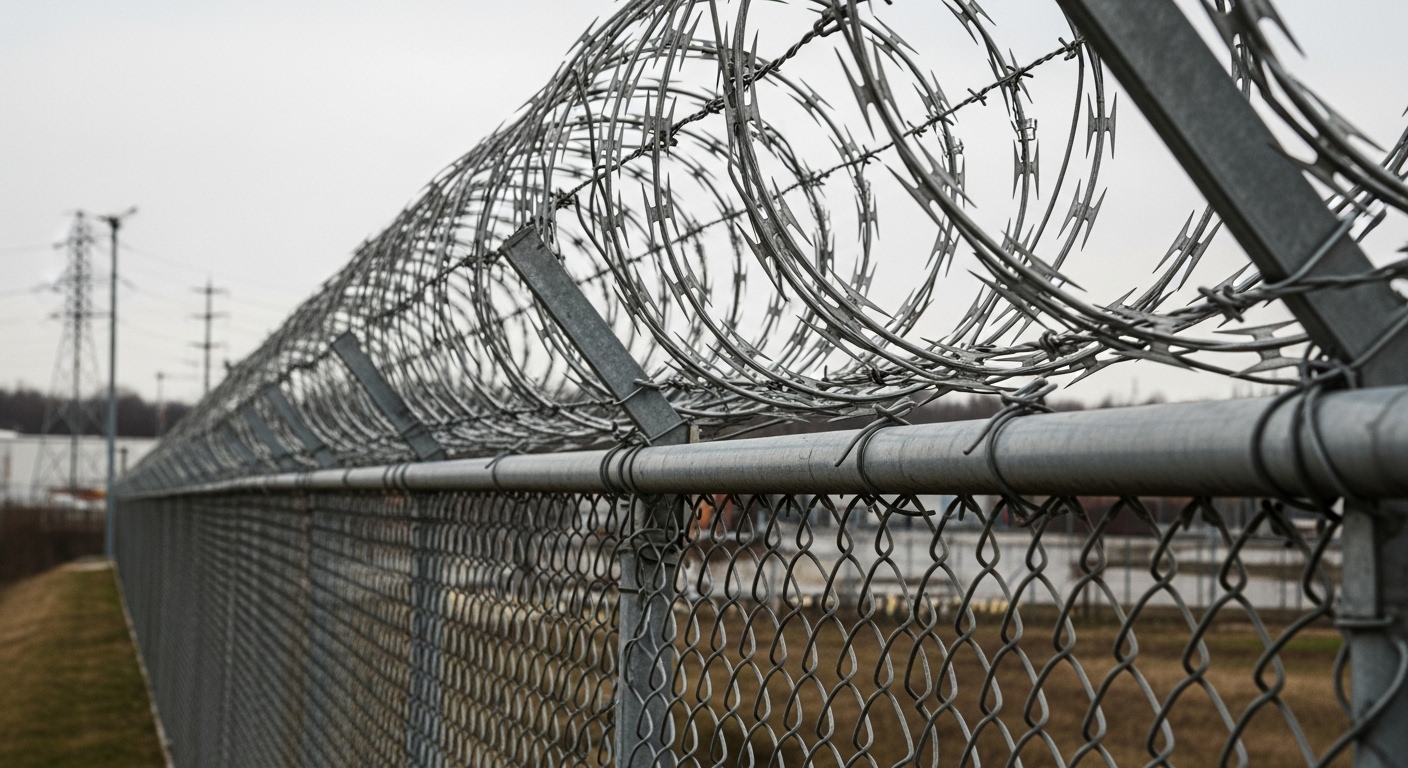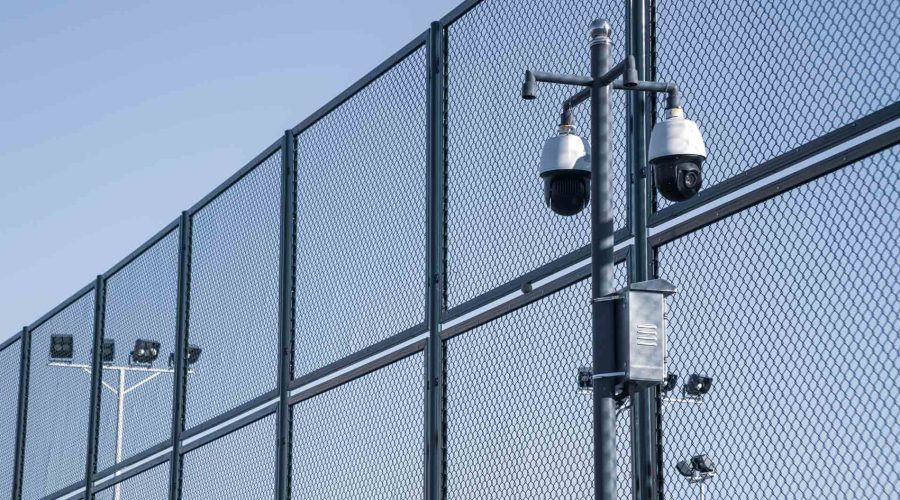
Airport perimeters face unprecedented security challenges that demand precision-engineered protection systems. Selecting the right airport perimeter fencing solution directly impacts operational safety, regulatory compliance, and public trust. This comprehensive guide examines critical factors for choosing security fencing systems that meet aviation industry standards and deliver reliable perimeter protection.
Airport security extends far beyond passenger screening and baggage checks. The perimeter represents the first line of defense against unauthorized access, requiring specialized airport fencing solutions that integrate seamlessly with broader security infrastructure.

Airports operate as high-value targets requiring multilayered security approaches. The perimeter zone demands constant monitoring and robust physical barriers that prevent intrusion attempts while maintaining operational efficiency.
Aviation facilities present unique vulnerabilities that standard commercial fencing cannot adequately address. These locations require high-security airport fencing systems engineered to withstand determined intrusion attempts while providing clear sight lines for surveillance equipment.
Key risk factors include:
Airport perimeter security faces distinctive operational challenges that influence fencing system selection and implementation strategies.
Airport environments subject security fencing to extreme conditions including jet blast exposure, weather variations, and electromagnetic interference from aviation equipment. Security fencing for airports must maintain structural integrity under these demanding conditions while providing consistent protection levels.
Large airport perimeters require extensive fencing networks that maintain uniform security standards across varying terrain and access points. This scale demands modular security solutions that deliver consistent performance while accommodating site-specific requirements.
Modern airport security systems integrate multiple technologies including CCTV networks, motion sensors, and access control systems. Airport fencing solutions must accommodate these integrations without compromising structural performance or creating security vulnerabilities.
Effective airport perimeter protection combines physical barriers with advanced detection technologies that provide real-time threat assessment capabilities.
Modern airport security fence installations incorporate embedded sensors that detect climbing, cutting, or impact attempts. These systems provide immediate alerts while maintaining the physical barrier integrity essential for perimeter protection.
Fiber-optic sensing technology offers precise intrusion detection along extended perimeter lengths. These systems detect vibration patterns and provide location-specific alerts that enable rapid response coordination.
Advanced camera systems with thermal imaging capabilities provide continuous perimeter monitoring regardless of lighting conditions. Video analytics software identifies suspicious behavior patterns and triggers automated response protocols.
Successful airport perimeter security requires strategic planning that addresses immediate security needs while accommodating future expansion and technology upgrades.
Effective perimeter protection combines multiple security layers including detection zones, physical barriers, and response protocols. This approach ensures redundant protection that maintains security integrity even if individual components experience failures.
Regular maintenance schedules and testing procedures ensure continuous system performance. High-security airport fencing requires specialized maintenance protocols that address component wear while maintaining security standards.
Security personnel require comprehensive training on system operation, threat assessment, and response coordination. Clear protocols ensure rapid response to security alerts while minimizing false alarm disruptions.
Airport perimeter fencing encompasses various specialized solutions designed for specific security requirements and operational environments.
Anti-climb designs prevent scaling attempts through specialized mesh patterns and height configurations. These systems maintain visibility for surveillance while creating effective climbing deterrents.
Dense mesh configurations provide cut-resistance while maintaining structural integrity under impact attempts. These systems integrate effectively with detection technologies and access control points.
Comprehensive barrier solutions combine fencing with vehicle barriers, gates, and checkpoint facilities. This integration ensures consistent security standards across all perimeter access points.
Selecting appropriate airport fencing solutions requires evaluation of multiple technical and operational factors that influence long-term performance and security effectiveness.
Aviation security regulations specify minimum standards for perimeter protection including height requirements, material specifications, and detection capabilities. Compliance verification ensures operational approval and ongoing regulatory acceptance.
Local climate conditions, soil characteristics, and terrain variations influence fencing system selection and installation requirements. Professional site assessment identifies environmental factors that affect system performance and longevity.
Modern security systems require seamless integration between physical barriers, detection systems, and response protocols. Compatibility assessment ensures effective system coordination without performance compromises.
Long-term system reliability depends on available maintenance support and replacement part accessibility. Established support networks ensure minimal downtime and consistent security performance.
Collaborating with the right security partner is crucial to achieving robust and efficient solutions tailored to specific requirements. Mandoosgroups.com excels as a trusted partner in the security industry, offering comprehensive expertise, innovative solutions, and unparalleled support. Their proven track record ensures that clients can rely on them for effective, high-quality systems that meet both current and future security challenges.
Airport perimeter fencing typically requires minimum heights of 8-10 feet with additional anti-climb features. Specific requirements vary by airport classification and regulatory jurisdiction.
High-quality airport fencing solutions incorporate weather-resistant materials and design features that maintain structural integrity under extreme conditions including high winds, temperature variations, and precipitation.
Regular inspection schedules typically include monthly visual assessments, quarterly system testing, and annual comprehensive evaluations. Maintenance frequency may increase based on environmental conditions and system complexity.
Installation timelines vary based on perimeter length, system complexity, and site conditions. Professional providers typically complete projects within 8-12 weeks including planning, permitting, and commissioning phases.
Choosing the right airport security fence system requires careful evaluation of technical specifications, regulatory requirements, and operational needs. Professional security partners provide the expertise necessary to navigate these complex requirements while ensuring reliable perimeter protection that meets aviation industry standards.
Investing in proven airport perimeter fencing solutions delivers long-term security performance backed by comprehensive support networks. Contact certified security specialists to assess your specific requirements and develop customized protection strategies that ensure operational security and regulatory compliance.